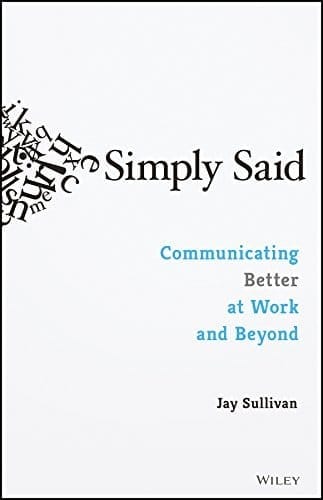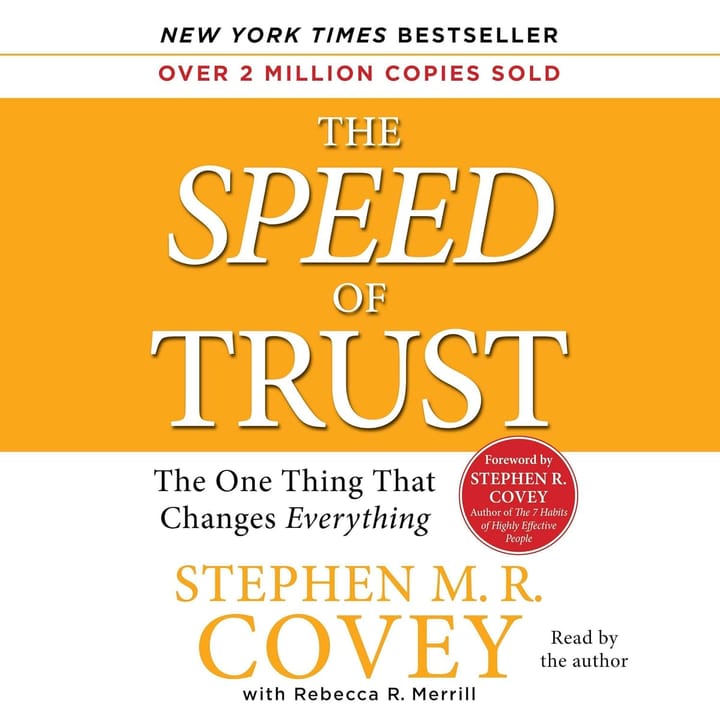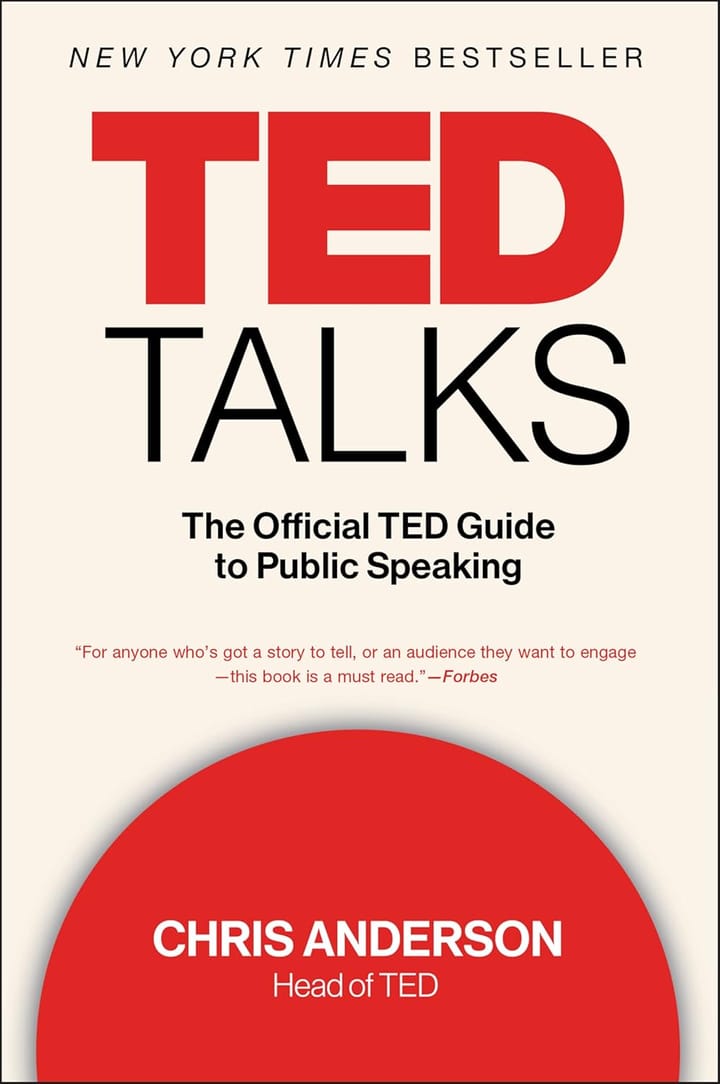Book Summary: Simply Said
Explore key takeaways from the book Simply Said by Jay Sullivan in this insightful summary article on effective communication strategies.

Essential Insights
- Effective communication is essential for success in business and personal relationships.
- Simply Said provides practical tips and techniques for improving communication skills.
- The book emphasizes the importance of clarity, brevity, and impact in communication.
Introduction to Simply Said
Simply Said by Jay Sullivan is a practical guide to effective communication in the workplace. Written by Jay Sullivan, a seasoned communication expert and mentor, this book offers valuable insights on how to express ideas clearly, persuasively, and with impact. With a focus on simplicity and clarity, Simply Said provides actionable tips and strategies that professionals can apply immediately to enhance their communication skills.
For anyone looking to improve their leadership capabilities, mastering the art of communication is essential. Simply Said equips readers with the tools needed to communicate effectively in various professional settings, whether it's delivering a compelling presentation, leading a team meeting, or engaging in crucial conversations. By learning the principles outlined in Simply Said, individuals can enhance their leadership presence and build stronger relationships with colleagues, clients, and stakeholders, ultimately leading to greater success in their careers.
Summary of Simply Said
Simply Said by Jay Sullivan focuses on the essential elements of effective communication. Its main themes center around the importance of clarity, connection, and purpose in conveying messages. Sullivan emphasizes that clear communication is crucial for success in both personal and professional realms. He offers practical strategies that enable individuals to express their ideas more effectively and encourage meaningful interactions with others. By honing these skills, readers can foster better relationships and achieve greater understanding in their communications.
One of the standout contributions of Simply Said is its emphasis on the power of simplicity in communication. Sullivan argues that stripping away unnecessary complexity leads to more impactful exchanges. He also highlights the importance of active listening, suggesting that effective communication is as much about receiving messages as it is about delivering them. The book provides relatable anecdotes and actionable tips, making its teachings accessible to a wide audience. This approach not only serves to engage readers but also empowers them to implement these communication techniques in their own lives. As readers immerse themselves in Simply Said, they will discover valuable lessons about the art of communication that can enhance their leadership abilities.
Sullivan’s insights remind us that effective communication is a skill that can be developed and refined. By prioritizing simplicity and connection, individuals can elevate their interactions, making a lasting impact on those around them. This foundation will set the stage for ongoing exploration of leadership and personal development, inviting readers to reflect on their own communication practices and pursue growth.
Key Lessons From Simply Said
Effective Communication
One of the standout lessons in Simply Said is the importance of effective communication. Jay Sullivan emphasizes that clear and concise messaging is essential in both personal and professional settings. He argues that a well-crafted message can bridge gaps in understanding and foster stronger relationships. By eliminating jargon and focusing on core ideas, communicators can convey their thoughts more effectively, ensuring that their audience fully grasps the intended message.
For instance, Sullivan shares an example of how a manager successfully communicated company goals to a diverse team. By simplifying complex strategies into straightforward objectives, the manager ensured that all team members were on the same page. This not only enhanced understanding but also motivated the team to achieve these goals collaboratively.
This lesson encourages readers to reflect on their own communication habits. By striving for clarity and simplicity, individuals can inspire collaboration and engagement within their teams. The significance lies in the potential to reduce misunderstandings, foster trust, and promote a culture of openness. Whether in meetings, emails, or presentations, adopting this principle can lead to noticeable improvements in how messages are received and acted upon.
Active Listening
Another critical concept presented in Simply Said is active listening. Sullivan highlights that genuine listening goes beyond hearing words; it involves engaging with the speaker and understanding their point of view. This practice not only enhances interpersonal relationships but also cultivates an environment where individuals feel valued and heard. By actively listening, one can develop greater empathy and make informed responses that acknowledge the speaker's perspective.
The ability to listen actively can be transformative in numerous aspects of life, from personal interactions to workplace dynamics. Readers are encouraged to practice this skill intentionally, fostering deeper connections with others. The potential for growth lies in the ability to create a more inclusive environment where everyone feels empowered to share their thoughts and ideas, ultimately leading to more effective teamwork and collaboration.
Embracing Feedback
Simply Said underscores the value of embracing feedback, a lesson that challenges readers to view criticism as a growth opportunity rather than a setback. Sullivan argues that productive feedback can lead to significant personal and professional development. When individuals actively seek to understand and implement constructive critiques, they not only enhance their skills but also display a commitment to continuous improvement.
The book provides a scenario in which an employee receives feedback on a presentation. Initially, the employee feels disheartened; however, upon reflection and application of the feedback, they refine their approach and deliver an outstanding presentation in the future. This example illustrates that feedback, when embraced, can turn initial disappointment into a powerful catalyst for improvement.
Storytelling as a Tool
Another impactful lesson from Simply Said is the power of storytelling in communication. Sullivan posits that narratives can make messages more relatable and memorable. By incorporating stories, individuals can engage their audience on an emotional level, ultimately making their messages resonate more deeply than straightforward facts or data alone.
Application Ideas for Simply Said
Effective Communication: Start with Clarity
One of the key teachings from Simply Said is the importance of clarity in communication. To apply this principle, individuals should focus on articulating their thoughts in a straightforward manner. Begin conversations or presentations by stating the main idea or purpose right at the beginning. This sets the stage for a focused discussion and ensures that your audience knows what to expect.
To implement this in daily interactions, practice synthesizing your thoughts before speaking. Spend a moment organizing your ideas; consider what you want your audience to leave with. For instance, if you’re leading a team meeting, sharing the meeting’s objective first will guide conversations effectively. An added benefit of this approach is that it reduces misunderstandings and helps maintain engagement.
Consider also using simple language and avoiding jargon unless necessary. This not only makes your point accessible but also promotes inclusivity among team members or colleagues who may not be familiar with specific terms. A final actionable step could be summarizing key takeaways at the end of discussions or emails, reinforcing clarity and ensuring everyone is on the same page. A real-world example of this is in project kick-offs where setting clear expectations right away fosters collaboration and alignment among teams.
Build Trust Through Listening
Listening is a critical aspect of effective communication explored in Simply Said. To cultivate trust, practice active listening by fully concentrating on the speaker, showing empathy, and responding thoughtfully. This step is essential in both personal and professional settings, as it signals respect for the other person's input.
Implement this by minimizing distractions during conversations. When in a discussion, maintain eye contact and refrain from checking your phone or computer. This could be particularly useful in performance reviews or team brainstorming sessions, where the exchange of ideas is vital. Engaging in this manner can nurture stronger relationships and a more open communication culture.
To reinforce this habit, consider taking notes during conversations as a way to demonstrate attentiveness and later follow up on discussed points. A practical application of this is to establish regular one-on-one check-ins with team members. This allows for a continuous feedback loop, increasing team morale and fostering a safe environment for sharing thoughts. A real-world scenario might involve a manager who, by embracing active listening, discovers innovative solutions from team members that lead to better project outcomes.
Simplifying Messages for Impact
Jay Sullivan emphasizes the need for simplicity in messaging throughout Simply Said. An actionable step is to review your written communication—such as emails, reports, or presentations—and strive to condense the message to its essential points. This will help eliminate unnecessary information and enhance the overall impact of your communication.
When crafting an email, for example, focus on the main objective, using bullet points or numbered lists to highlight key information. This makes it easier for recipients to comprehend your message quickly, leading to faster responses or actions. This practice is particularly effective in fast-paced work environments where time is limited, ensuring that your audience remains engaged and informed.
An additional way to apply this principle is by utilizing visuals such as charts or infographics to represent data instead of lengthy explanations. This serves to clarify complex information efficiently. For instance, in a quarterly business review, presenting key performance metrics through visuals can convey crucial data clearly and swiftly, enabling strategic conversations to develop more naturally. A real-world example could involve a sales team that reduces lengthy reports into simple slide presentations, resulting in more productive meetings that drive decision-making.
Fostering Open Dialogue
A significant takeaway from Simply Said is the encouragement of open dialogue within teams or organizations. Begin by creating an environment where team members feel comfortable sharing their thoughts, opinions, and feedback. This can be initiated through regular forums, such as team huddles or brainstorming sessions, aimed at generating ideas and addressing challenges collaboratively.
To facilitate open dialogue, establish ground rules for discussions that promote respect and constructive criticism. Encouraging all voices to be heard enriches the conversation, allowing diverse viewpoints to surface. Implementing a rotating facilitator role during these meetings can also encourage participation, ensuring that different team members take charge and bring unique strengths to the table.
Another practical application is to actively seek out feedback, not just during meetings but also after projects or initiatives. Use anonymous surveys or informal polls to gather input on what worked well and what could be improved. A real-world scenario could involve a software development team that holds post-project retrospectives, leading to continuous improvement and increased innovation in subsequent projects, demonstrating how open dialogue can enhance team dynamics and results.
Concluding Thoughts
Simply Said by Jay Sullivan offers invaluable lessons on effective communication that resonate in both personal and professional environments. The principles outlined in this article, such as the importance of clarity, active listening, and embracing feedback, provide a solid foundation for enhancing one's communication skills. Sullivan’s emphasis on simplifying messages demonstrates that clear and concise communication can foster deeper connections, boost collaboration, and foster trust within teams.
The exploration of storytelling as a communication tool illustrates how relating personal experiences can make messages more engaging and memorable. Additionally, the focus on fostering open dialogue encourages a culture of openness and inclusivity, enabling individuals to feel empowered to share their thoughts and ideas. By actively implementing these strategies, readers can see significant improvements in their interactions, leading to stronger relationships and a more effective communication style. The value of Simply Said lies in its practicality and relatability. Each concept discussed is supported by real-world examples and actionable steps, making it easy for readers to integrate these lessons into their everyday lives. This approachable style empowers individuals at all levels to hone their communication abilities, paving the way for personal growth and professional success.
As you reflect on the teachings of this book, consider how you can apply Sullivan's strategies in your own life. Whether you're looking to clarify your messaging, become a better listener, or create an environment that encourages open communication within your team, the lessons from Simply Said can guide your journey. Take the initiative to practice these skills and witness the positive impact they can have on your personal and professional relationships. Embrace the power of effective communication and unlock new possibilities for connection and collaboration.
Related Topics
- Effective Communication
- Strategies for effectively conveying messages and ideas in various professional settings.
- Public Speaking
- Tips and techniques for delivering engaging and impactful presentations to audiences.
- Leadership Skills
- Developing the ability to inspire and motivate others towards a common goal.
- Business Etiquette
- Understanding the social norms and expectations that govern professional behavior in the workplace.
Reflection & Discussion Questions
Reflection is a powerful tool for personal growth and leadership development. Whether you're exploring your own experiences or engaging in thoughtful group discussion or team training, reflection questions help uncover new insights, clarify values, and inspire meaningful action. Below are questions designed to deepen your understanding of the concepts taught in Simply Said, and facilitate constructive conversations with your team or group.
- How can you apply the principle of clarity in communication to enhance your leadership style?
- What strategies can you use to practice active listening in your professional interactions?
- How has feedback, whether positive or constructive, contributed to your personal and professional growth?
- In what ways can storytelling be integrated into your communication to make your messages more impactful?
- How can you prioritize simplicity in your messages to ensure they are easily understood and remembered?
- What steps can you take to build trust with others through active listening and thoughtful responses?
- How can you simplify your written communication to ensure key points are conveyed effectively and efficiently?
- What initiatives can you implement to promote open dialogue and encourage diverse viewpoints within your team or organization?
- What lessons from Simply Said can you apply to facilitate collaboration and alignment among team members?
- How can you create a culture of openness and inclusivity through your communication practices?
- What impact can embracing feedback have on your professional development and overall success?
- How can you use visuals and storytelling to engage your audience and convey your message more effectively?
- In what ways can you demonstrate active listening in various situations, both at work and in personal relationships?
- How can you practice simplicity in your communication to foster stronger connections and mutual understanding with others?
- What strategies can you use to summarize key takeaways and ensure alignment among team members after discussions or meetings?
Recommended Reading
Below are a few recommended books related to concepts taught in Simply Said.
- Speak with Impact by Allison Shapira. A guide to improving public speaking skills and connecting with audiences on a deeper level.
- Crucial Conversations by Kerry Patterson, Joseph Grenny, Ron McMillan, and Al Switzler. Tips and strategies for handling difficult conversations effectively in both personal and professional settings.
- How to Talk to Anyone by Leil Lowndes. Techniques for improving communication skills and building rapport with others in various social situations.
Frequently Asked Questions
What is the main message of Simply Said?
Simply Said emphasizes the importance of clear, concise communication in professional settings. Through practical strategies and tips, Jay Sullivan guides readers on how to effectively express their ideas and connect with their audience. The book highlights the significance of being intentional with language and using simple, straightforward communication to make a lasting impact on others.
How can I make sure my message is clear and concise?
To ensure your message is clear and concise, it's important to eliminate any unnecessary information and avoid using jargon or technical language that may confuse your audience. Start by clearly defining your main point or objective and then supporting it with relevant, easy-to-understand details. Be mindful of your audience's level of knowledge on the topic and adjust your message accordingly. Remember to keep your sentences and paragraphs short, use bullet points or lists when appropriate, and avoid over-explaining or including too many details that may detract from your main message.
How can I use storytelling in my professional communications?
Using storytelling in your professional communications can be a powerful tool for making your message more engaging and memorable. By incorporating personal anecdotes, examples, and narratives into your presentations or conversations, you can create a connection with your audience and help them better understand and retain the information you are sharing. Additionally, storytelling can help make complex ideas more relatable and easier to comprehend. Don't be afraid to infuse emotion, humor, and authenticity into your storytelling to truly captivate your audience and leave a lasting impact.
How can I improve my ability to communicate under pressure?
To improve your ability to communicate under pressure, practice active listening, think before you speak, and stay calm and composed. Remind yourself to focus on the message you want to convey and don't get distracted by outside influences. It can also be helpful to practice deep breathing exercises or mindfulness techniques to stay centered in high-stress situations. Remember that good communication is a skill that can be developed with time and effort.
Affiliate Disclaimer
Some of the links on this website may be affiliate links. This means that, at no additional cost to you, we may earn a commission if you click through and make a purchase. Your support through these affiliate links helps sustain and improve the quality of the content we provide.



